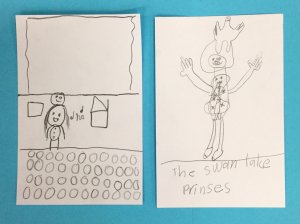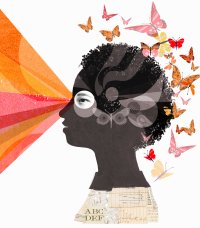3 Ways to Boost Students’ Conceptual Thinking
Coaching students to think in terms of concepts helps them understand how to apply their learning in the future.
We want our students’ learning to be enduring, enabling them to make sense of complexity now and in the future. For this to occur, we need to nudge students beyond the learning of facts and skills to uncover concepts—transferable ideas that transcend time, place, and situation.
Learning knowledge and skills is like standing in the middle of a forest, surrounded by trees: It’s easy to spot details but hard to see patterns. For students to think conceptually, they need opportunities to head up to the mountaintop, pause, and take in the entire forest. They need the chance to search for big ideas—to generalize, summarize, and draw conclusions by looking at their learning in a holistic way.
By intentionally designing learning activities in which students move between the factual and conceptual levels of thinking, we can help them construct understanding, facilitate transfer, and build their sense of agency.
Questions to Consider During Lesson Planning
To help students go from surface to deep learning, we can ask ourselves three questions:
- From the facts or skills being taught, which concepts are at the heart of the learning? For instance, a unit on the human body may be driven by the concepts of system, interdependence, and health.
- Which connections between concepts would we like students to make as a result of the learning? For example, in mathematics, we may ask students to connect the concepts of multiplication and division. In science, we may wish to see how they draw links between photosynthesis and energy transformation.
- What opportunities for application and transfer can we design to help students take their learning further? For instance, we may ask students who have learned about principles of art and design to create posters for a social or environmental cause of their choice.
These questions reflect different levels of conceptual thinking. If students do not have a strong understanding of individual concepts, they’ll struggle to see patterns and make connections between them. Likewise, if we don’t give students time to construct understanding, it will be challenging for them to apply their ideas to projects, current events, or other new contexts.
3 Ways to Promote Conceptual Thinking
1. Using categorizing, naming, and sorting activities: In order to understand individual concepts, students need to grapple with examples, non-examples, and attributes of a concept. We can ask students, “What is it like?” and invite them to describe the key features.
For instance, young children learning about habitats may be shown images of a beehive, pond, log, fish tank, rabbit hutch, and zoo enclosure and prompted to describe how these homes are similar or different. By comparing these examples and non-examples of the concept habitat, students come to understand that a habitat is the natural environment in which an animal’s needs are met.
By asking students to engage in categorizing, naming, and sorting activities, we prepare them for more-complex thinking to come later in a unit and reduce misconceptions.
Concept formation activities:
- Create a T-chart labeled Yes and No and ask students to sort examples and non-examples of a concept, such as a polygon.
- Provide students with examples of a concept and invite them to find common attributes and write their own definitions using a stem, such as, “Migration is when _____.”
- Share a concept and ask students to generate their own examples or non-examples. These can be represented in words or pictures. In the image below, Grade 1 student illustrations show the concept of a performer; the students collaboratively analyzed the images to come up with attributes like being in front of an audience.

2. Asking students to make connections: As students engage with a unit, they explore a variety of contexts that illustrate concepts in action. In a unit on the civil rights movement, for example, students may learn about the Montgomery bus boycott and the Greensboro sit-ins. By drawing out connections between concepts such as protest and rights, students can zoom out to see the big picture of their learning.
To support generalizing, we can design activities that require students to link concepts. For instance, students in my Grade 7 social studies class engaged in concept mapping at the end of a unit on sustainability. They mapped out concepts hierarchically, then created connections using linking words to describe relationships between them. I asked them to chart out their main understandings as statements next to their concept map. It’s important when facilitating such activities to ensure that students support their thinking using evidence from prior learning.
Concept linking activities:
- Invite students to take the role of a specific concept explored in a unit, and ask them to sit in a circle of four or five people, each representing a different concept. They then make connections to each other, explaining how and why they connect using evidence from prior learning.
- Use graphic organizers that ask students to collaboratively synthesize multiple case studies. For instance, have students read about Malala Yousafzai, Martin Luther King Jr., and Greta Thunberg and take notes using a triple Venn diagram that will help them answer the question, “How do change makers overcome challenges?”
3. Planning for transfer: Activities that invite students to form concepts and make connections between them prime the brain for transfer—in each of these stages of conceptual thinking, we help students to reason abstractly and identify the “So what?” of their learning. Once students have formed connections between concepts and articulated these as understandings, we can provide them with opportunities to apply them to new situations. This allows students to see the relevance of their learning to both near and far contexts.
Transfer activities:
- Give students a novel case study to grapple with and invite them to apply their understandings. Ask them to revise their thinking: How might we need to change our original idea to include the new case study?
- Invite students to take a stance on a provocative statement and debate using their prior knowledge and understanding. For instance, “Plants are the most important organisms within an ecosystem” could be discussed at the end of an ecosystems unit.
